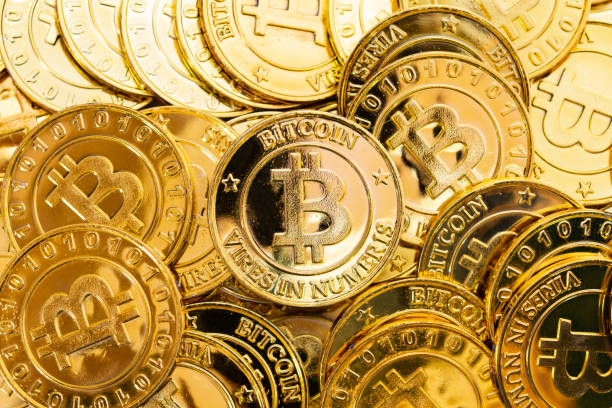The last Bitcoin halving took place on May 11, 2020, and the next bitcoin halving will likely occur in April 2024. But what is the halving, how does it affect the price, and what does it mean for miners and the cryptocurrency’s long-term prospects?
The event that is most eagerly awaited in the history of Bitcoin is called the Bitcoin halving, or “the halvening.”
Block rewards, or the amount of bitcoin (BTC) that are released into circulation every 10 minutes, were cut in half in May 2020, from 12.5 to 6.25. This milestone was predictable since it occurs every 210,000 blocks, or roughly every four years, and it had already occurred twice before 2020.
The attraction of potential wealth is what makes these events so well-known. As fewer new bitcoin enter the market, demand should presumably remain constant, thereby increasing the price of bitcoin. As a result, the incident has sparked a heated discussion regarding projected bitcoin prices and market reactions.
“The idea is that if miners have less to sell, there will be less bitcoin available for purchase,” explained Michael Dubrovsky, co-founder of the organization PoWx that conducts cryptocurrency research.
However, the regular drop in Bitcoin’s minting rate may be more important to the currency’s operation than any short-term price fluctuations. One of the key elements of Bitcoin that guarantees the security of this leaderless system is the block reward. The economic incentives that underpin the security of bitcoin may become unstable if the rewards eventually decrease to zero in the coming decades.
Here’s everything you need to know if you’re seeking to understand this complicated subject.
What is the bitcoin halving?
As block rewards, newly created bitcoins are created by “miners” who employ costly computer equipment to “mine,” or earn, them.
The total amount of bitcoin that miners may earn is half approximately every four years.
Every ten minutes, the system awarded 50 bitcoin to miners who were successful in 2009. 6.25 bitcoins are now being distributed every ten minutes, following three halvings.
When there are 21 million bitcoin in circulation, the process will come to a conclusion. The general consensus is that it will happen sometime around 2140.
Who chose the Bitcoin distribution schedule? Why?
The anonymous creator of Bitcoin, Satoshi Nakamoto, may have been a single person or a group, and they vanished almost a year after making the software available to the public. Henceforth, he, she, or they (henceforth referred to as “they”) are no longer with us to provide an explanation for their decision to use this particular formula to introduce fresh bitcoin into the market.
However, early emails from Nakamoto provided some insight into the thoughts of the enigmatic individual.
Soon after publishing the Bitcoin white paper, Nakamoto outlined the possible outcomes of their selected monetary policy, which determines when miners receive block rewards. They considered the scenarios in which this policy could result in inflation or deflation, or the rise in the prices of goods and services that can be purchased with currency.
Nakamoto could not have predicted at the time how many people, if any, would utilize the new digital currency.
They wrote, “Coins have to get initially distributed somehow, and a constant rate seems like the best formula,” but they didn’t go into any detail as to why they arrived at that specific calculation.
“Total circulation will be 21,000,000 coins. It’ll be distributed to network nodes when they make blocks, with the amount cut in half every 4 years. first 4 years: 10,500,000 coins next 4 years: 5,250,000 coins next 4 years: 2,625,000 coins next 4 years: 1,312,500 coins etc.“
Learn more
A central bank, like the U.S. Federal Reserve, has the ability to add or remove dollars from circulation with regard to the majority of state-issued currencies. For example, if the economy is struggling, the Fed can buy assets from banks to boost circulation and promote lending. Alternatively, the Fed can sell securities from its account to withdraw dollars from the economy.
To put it well or poorly, bitcoin is a little unique. First of all, the supply timetable is essentially predetermined.
A central bank, like the U.S. Federal Reserve, has the ability to add or remove dollars from circulation with regard to the majority of state-issued currencies. For example, if the economy is struggling, the Fed can buy assets from banks to boost circulation and promote lending. Alternatively, the Fed can sell securities from its account to withdraw dollars from the economy.
To put it well or poorly, bitcoin is a little unique. First of all, the supply timetable is essentially predetermined.
Blockchain
In contrast to the majority of well-known national currencies, such as dollars or euros, bitcoin was created with a set quantity and a predetermined rate of inflation. The total number of bitcoins is limited to 21 million. Blockchain.com, a business that develops cryptocurrency wallets, stated in a blog post prior to the 2016 halving that “this predetermined number makes them scarce, and it’s this scarcity alongside their utility that largely influences their market value.”
The fact that Nakamoto designed the block reward to decline over time is another distinctive feature of Bitcoin. It also deviates from the standard for contemporary financial systems, in which the money supply is managed by central banks. Compared to Bitcoin, which halves its block reward every year, the dollar’s supply has nearly tripled since 2000.
Nakamoto gave hints suggesting that their motivation for creating Bitcoin was political. The title of a newspaper story, “The Times 03/Jan/2009 Chancellor on brink of second bailout for banks,” appears in the first Bitcoin block.
That comment has been widely interpreted as a declaration of Nakamoto’s political objectives and ideas. Bitcoin may lessen the influence that governments and banks have over monetary policy, including the ability to save failing companies, if it is broadly accepted. No central organization is able to create bitcoin outside of the rigid schedule, as demonstrated by the block reward.

